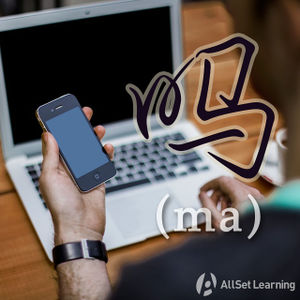Difference between revisions of "Questions with "le ma""
ViktorMugli (talk | contribs) (→Books) |
ViktorMugli (talk | contribs) |
||
| Line 54: | Line 54: | ||
* [[Modern Mandarin Chinese Grammar: A Practical Guide]] (pp. 229) [http://www.amazon.com/gp/product/0415700108?ie=UTF8&tag=allset-20&linkCode=as2&camp=1789&creative=390957&creativeASIN=0415700108 →buy] | * [[Modern Mandarin Chinese Grammar: A Practical Guide]] (pp. 229) [http://www.amazon.com/gp/product/0415700108?ie=UTF8&tag=allset-20&linkCode=as2&camp=1789&creative=390957&creativeASIN=0415700108 →buy] | ||
* [[New Practical Chinese Reader 2 (新实用汉语课本2)]] (pp. 17) [http://www.amazon.com/gp/product/7561911297/ref=as_li_ss_tl?ie=UTF8&tag=allset-20&linkCode=as2&camp=217145&creative=399369&creativeASIN=7561911297 →buy] | * [[New Practical Chinese Reader 2 (新实用汉语课本2)]] (pp. 17) [http://www.amazon.com/gp/product/7561911297/ref=as_li_ss_tl?ie=UTF8&tag=allset-20&linkCode=as2&camp=217145&creative=399369&creativeASIN=7561911297 →buy] | ||
| − | + | * [[A Practical Chinese Grammar For Foreigners (外国人实用汉语语法)]] (pp. 429) [http://www.amazon.cn/mn/detailApp?_encoding=UTF8&tag=allset-23&linkCode=as2&asin=B001J0ADWA&camp=536&creative=3132&creativeASIN=B001J0ADWA →buy] | |
Revision as of 09:16, 21 June 2012
-
Level
-
Similar to
-
Used for
-
Keywords
Asking questions about completed actions will involve using both 了 and 吗. These are simply added to the end of a sentence or statement. This means you might see questions with 了 and 吗 in different structures.
Contents
General structure
Subject + Verb + Object + 了吗
Examples
- 你 去 了 吗?
- 你 吃饭 了 吗?
- 你 看 了 吗?
Another common structure
Object + Verb + 了吗
Examples
- 北京 去 了 吗?
- 饭 吃 了 吗?
- 电影 看 了 吗?
Notice that in this one the object is introduced first as a topic.
Finally, please notice that this pattern is nothing more than the combination of the Expressing completion with le pattern and the Yes - no questions with ma pattern.
See also



